As the summer heats up, many homeowners with a swimming pool want to make sure their pool experience is as safe as possible. One of the most dangerous hazards that pool owners face is floating pool ladders.
It is a common issue that many pool owners face, and it poses a risk of accidents, injuries, and even drowning.
Fortunately, there are practical ways to fix this problem and keep your pool ladder securely in place. In this article, we will learn how to keep a pool ladder from floating explore different weighting methods, expert advice, and pro tips to ensure a safe and enjoyable pool experience.
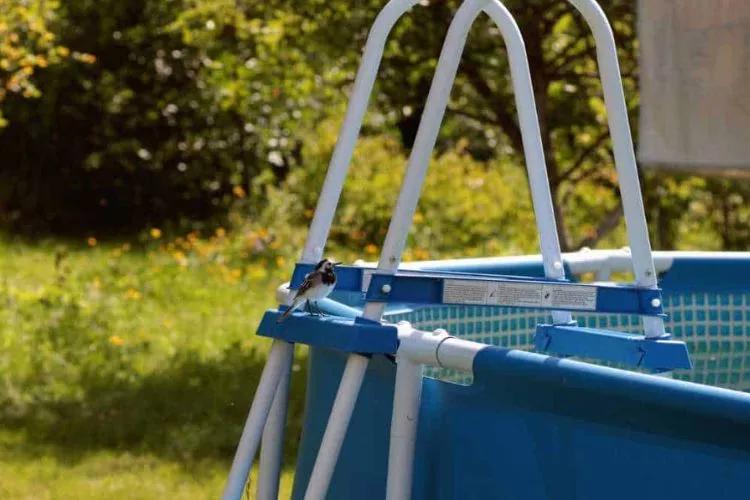
Why Do Pool Ladders Float?
Before we dive into the methods to keep pool ladders from floating, it’s important to understand why it happens. There are two main reasons why pool ladders float – air pockets and buoyancy.
Air pockets are common in the design of pool ladders, and they can be created during the manufacturing process or when assembling the ladder. If there is trapped air inside the ladder, it will create buoyancy and cause the ladder to float in the pool.
Buoyancy, on the other hand, is a force that makes objects float in liquid. As per Archimedes’ principle, an object immersed in water is buoyed up by a force equal to the weight of the displaced water.
Therefore, the lighter the ladder, the more likely it is to float in the pool. That’s why ladder design and materials also play a crucial role in preventing the ladder from floating.
How To Keep A Pool Ladder From Floating?
Weighting Methods
Weighting the pool ladder is the most effective method to prevent it from floating. There are different weighting methods that you can choose based on your particular ladder, pool type, and personal preference. Let’s explore each of them in detail.
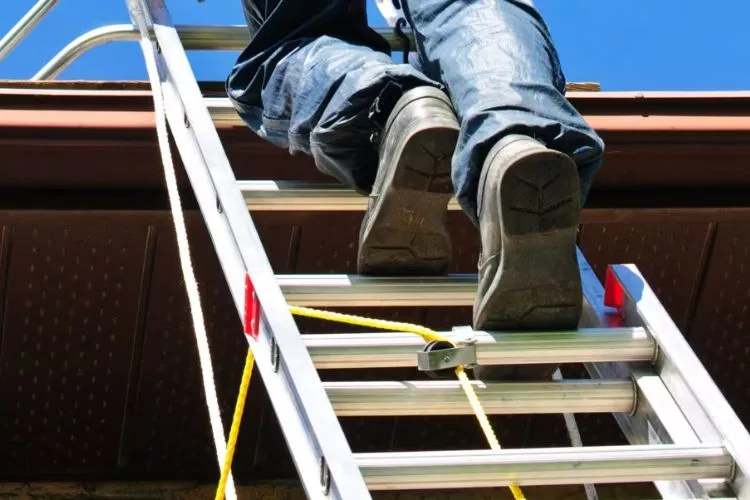
Use of Sandbags
Sandbags are a convenient way to add weight to your pool ladder to prevent it from floating. To use them, first, you will need to fill sandbags with sand and place them on the ladder base. Depending on the size and weight of your ladder, you may need to use multiple sandbags. It’s important to distribute the weight evenly to avoid any instability.
Here’s a step-by-step guide on how to use sandbags:
- Fill sandbags with sand or gravel according to the weight required.
- Place the sandbags on the ladder base.
- Slowly lower the ladder into the pool.
- Make sure the sandbags are positioned evenly.
- Adjust the weight distribution if needed.
- Check the ladder’s stability by shaking it lightly.
- If the ladder still floats, try using additional sandbags.
Pro Tips
- Make sure the sandbags are secure and don’t slide off the ladder.
- Avoid using plastic bags or containers as they may leak and create debris in the pool.
- Use clean dry sand to prevent mold or mildew.
- Replace the sand periodically to maintain its weight.
Filling Ladder Legs with Water
Filling ladder legs with water is another effective method to add weight to the ladder’s base. For this method, you will need to follow specific instructions depending on your ladder’s design and material.
Many pool ladders come with removable legs that can be filled with water or sand, while others have fixed legs that need to be drilled and sealed.
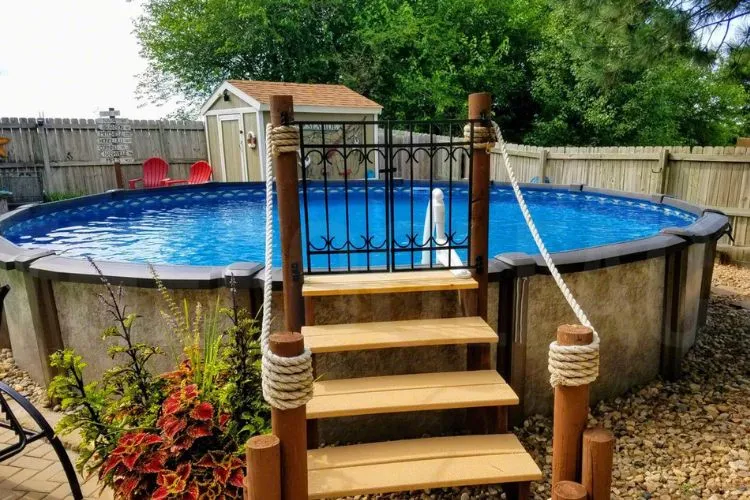
Here’s how to fill ladder legs with water:
- Locate the ladder’s legs that are suitable for filling with water.
- Detach the pins or screws holding the legs in place.
- Pull the legs out from the base or the ladder railings.
- Hold the legs vertically and fill them with water using a hose or bucket.
- Once the legs are full, firmly reattach them to the ladder base or railings.
- Check the ladder’s stability by shaking it lightly.
- If the ladder still floats, try removing and refilling the legs to ensure they are completely filled.
Pro Tips
- Make sure the legs are tightly secured to the base or the railings.
- Use a lubricant or silicone to improve the fitting of the legs.
- Avoid overfilling the legs to prevent bursting.
- Drain the water from the legs before winterizing the pool to prevent freezing and damage.
Alternative Weighting Materials
Besides sandbags and water, there are other alternative materials that can be used to weigh down the pool ladder. These materials are often handy and readily available in most homes, garages, or stores. Let’s explore some of the most common alternative weighting materials:
Bleach Bottles Filled with Sand or Water – This method involves using plastic bleach bottles filled with sand or water to serve as weights for the ladder base. They are easy to handle, and the weight can be adjusted to the needed level. Make sure the bottles are securely fastened to the ladder and that they don’t tip over.
Concrete Blocks – Concrete blocks are heavy and sturdy, making them ideal for stabilizing pool ladders. They come in different sizes and shapes, allowing greater flexibility in positioning the ladder. However, they may scratch the pool surface if not handled with care.
Dumbbells or Weights – If you have any old dumbbells or weight sets lying around, they can be useful for weighing the pool ladder. Place them on the ladder’s base and balance the weight evenly. Ensure that they are secured in place and can’t roll off.
Attaching Ladder to Pool Railing
Attaching the ladder to the pool railing is one of the most secure methods to prevent the ladder from floating. This method involves using straps, clips, or brackets to fix the ladder to the pool side and hold it in place. It works well for in-ground pools with a sturdy railing to prevent any slipping or sliding.
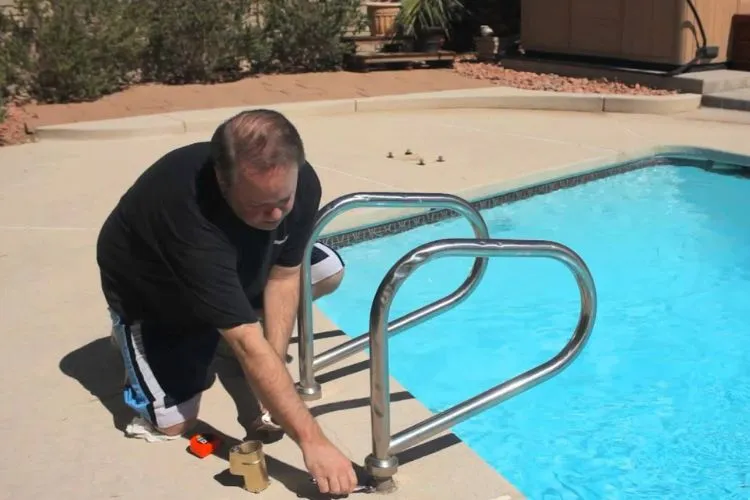
Here’s how to attach the ladder to the pool railing:
- Position the ladder near the pool railing where it needs to be attached.
- Use a tape measure to determine the needed length of the straps or brackets.
- Secure the strap or bracket to the ladder base and the handrail.
- Adjust the strap or bracket length to ensure the ladder is level and secure.
- Tighten the screws or clips to lock the brackets in place.
Pro Tips
- Use high-quality straps or brackets made of stainless steel or heavy-duty material.
- Ensure that the pool railing is sturdy enough to hold the ladder’s weight.
- Check the ladder’s stability by shaking it lightly.
- Lubricate the ladder joints to prevent corrosion.
Pool Step Weights
Another innovative solution to stabilize the pool ladder is the use of pool step weights. These weights are designed to secure pool steps and ladders’ bases, making them an excellent solution to prevent them from floating or wobbling. They come in various designs such as disks, plates, or blocks, and they can be easily installed and removed.
Here’s how to use pool step weights:
- Take the weights and place them on opposite sides of the pool steps or ladder base.
- Slide the weights down until they rest firmly on the pool floor.
- Adjust the weights to ensure that they are secure and level.
Pro Tips
- Make sure to choose a weight that matches your pool ladder size and weight.
- Clean the weights periodically to remove any debris or dirt.
- Store the weights in a dry and cool place when not in use.
Additional Pool Safety Tips
Beyond the ladder, there are other measures you can take to ensure a safe and enjoyable pool experience. Here are some additional safety tips to consider:
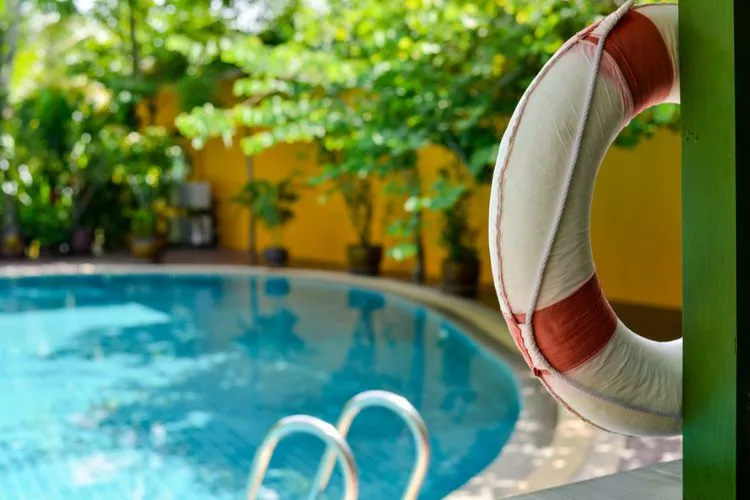
- Install a pool alarm or safety cover to prevent unsupervised use of the pool.
- Keep lifesaving equipment, such as a life buoy or rescue rope, near the pool area.
- Install proper lighting and pool fencing to enhance visibility and prevent unauthorized access.
- Maintain regular cleaning and maintenance of the pool and its surrounding area.
- Create and enforce pool safety rules for your family and guests.
Other related pool ladder articles: Can A Pool Ladder Rust? | How to Secure Above Ground Pool Ladder
Frequently Asked Questions (FAQs)
What is the best material to fill ladder legs with?
Water is the most common and easy-to-use material to fill ladder legs. Sand or gravel can also be used, but it may require more effort and maintenance.
How do I know how many sandbags to use for my ladder?
It depends on the ladder size and weight. As a general rule, try adding weight slowly and test the ladder’s stability by shaking it lightly. Add more sandbags if needed until the ladder stays in place.
Can I use PVC pipes to fill with sand or water?
PVC pipes can potentially create sharp edges that can harm your pool surface or swimmers. It is recommended to use materials that are more stable and reliable, such as sandbags or water-filled weights.
How do I remove ladder legs to fill with water?
Consult your ladder manual or manufacturer’s instructions to get specific information on how to detach the ladder legs. Typically, you will need to remove the screws or pins holding the legs to the base or the railings.
Conclusion:
Keeping your pool ladder from floating is crucial for ensuring pool safety and preventing accidents. There are various weighting methods that you can choose from depending on your ladder type, pool size, and personal preference.
Using sandbags, water-filled legs, or alternative materials can be an effective way to prevent pool ladder floatation.
Additionally, attaching the ladder to the pool railing or using step weights can provide a level of security and safety. By following these methods and additional pool safety tips, you can create a safe and enjoyable swimming experience for your family and guests.


